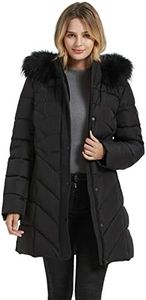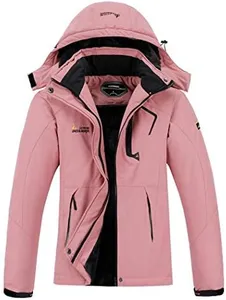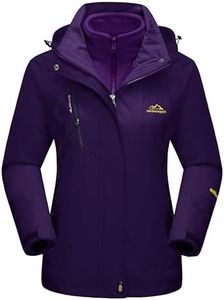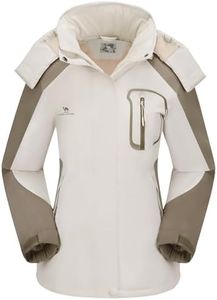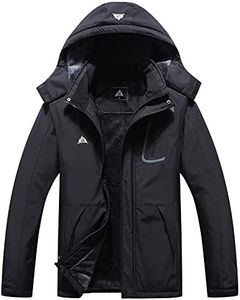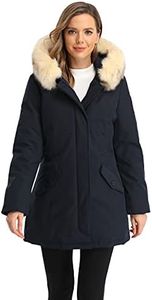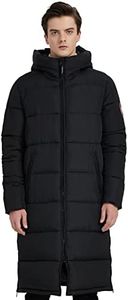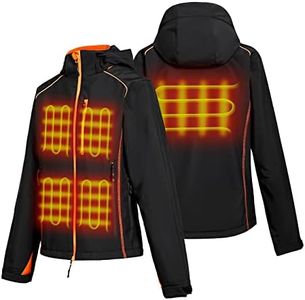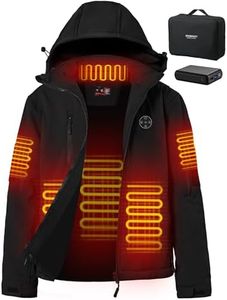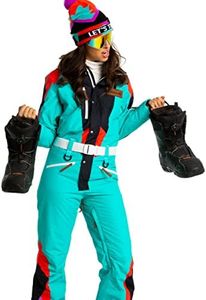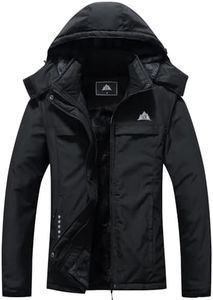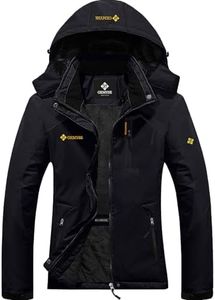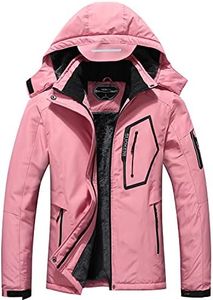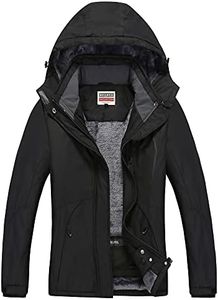We Use CookiesWe use cookies to enhance the security, performance,
functionality and for analytical and promotional activities. By continuing to browse this site you
are agreeing to our privacy policy
10 Best Ski Jackets For Women 2025 in the United States
How do we rank products for you?
Our technology thoroughly searches through the online shopping world, reviewing hundreds of sites. We then process and analyze this information, updating in real-time to bring you the latest top-rated products. This way, you always get the best and most current options available.

Buying Guide for the Best Ski Jackets For Women
Choosing the right ski jacket is crucial for ensuring comfort, warmth, and protection while enjoying your time on the slopes. A good ski jacket will keep you dry, regulate your body temperature, and allow for freedom of movement. When selecting a ski jacket, consider the following key specifications to find the best fit for your needs.Waterproof RatingThe waterproof rating of a ski jacket indicates how well it can keep water out. This is important because staying dry is essential for maintaining warmth and comfort. Waterproof ratings are measured in millimeters (mm) and typically range from 5,000mm to 20,000mm or more. Jackets with a rating of 5,000mm to 10,000mm are suitable for light to moderate snow conditions, while those with 10,000mm to 20,000mm or higher are better for heavy snow and wet conditions. Choose a higher rating if you expect to encounter wet and snowy conditions frequently.
BreathabilityBreathability refers to how well a jacket allows moisture from sweat to escape. This is important to prevent overheating and to keep you dry from the inside. Breathability is measured in grams (g) and typically ranges from 5,000g to 20,000g or more. A jacket with a breathability rating of 5,000g to 10,000g is suitable for less intense activities, while a rating of 10,000g to 20,000g or higher is better for high-intensity skiing or snowboarding. Choose a higher breathability rating if you tend to sweat a lot or engage in vigorous activities.
InsulationInsulation in a ski jacket helps to keep you warm by trapping body heat. There are two main types of insulation: down and synthetic. Down insulation is lightweight and highly effective at trapping heat, but it can lose its insulating properties when wet. Synthetic insulation is bulkier but retains warmth even when wet. The amount of insulation you need depends on the temperatures you expect to encounter. For very cold conditions, look for jackets with more insulation, while for milder conditions, less insulation may be sufficient.
Fit and MobilityThe fit of a ski jacket affects both comfort and mobility. A well-fitting jacket should allow for a full range of motion without being too tight or too loose. Ski jackets come in various fits, including slim, regular, and relaxed. A slim fit is more form-fitting and may be preferred by those who want a sleek look, while a regular fit offers a balance between comfort and mobility. A relaxed fit provides more room for layering and is ideal for those who prioritize comfort. Consider your personal preference and the type of skiing you do when choosing the fit.
VentilationVentilation features, such as pit zips or mesh-lined vents, help to regulate your body temperature by allowing excess heat to escape. This is important for preventing overheating, especially during intense activities or warmer weather. Look for jackets with adjustable ventilation options so you can customize airflow based on your needs. If you tend to get hot easily or ski in varying conditions, having good ventilation options can enhance your comfort.
Pockets and StoragePockets and storage options in a ski jacket are important for carrying essentials like your phone, wallet, ski pass, and snacks. Consider the number and placement of pockets to ensure they meet your needs. Some jackets have specialized pockets, such as a pass pocket on the sleeve or an internal media pocket with a headphone port. Think about what items you typically carry and choose a jacket with adequate and convenient storage options.
HoodA hood on a ski jacket provides additional protection from the elements, such as wind and snow. Hoods can be helmet-compatible, adjustable, and removable. A helmet-compatible hood is designed to fit over a ski helmet, which is important for safety and comfort. An adjustable hood allows you to customize the fit, while a removable hood offers versatility. Consider whether you wear a helmet and your preference for hood features when selecting a jacket.
SeamsThe seams of a ski jacket can be critically sealed, fully sealed, or not sealed at all. Sealed seams prevent water from seeping through the stitching, which is important for maintaining waterproofness. Critically sealed seams are taped only in high-exposure areas, while fully sealed seams are taped throughout the entire jacket. For wet and snowy conditions, fully sealed seams provide the best protection. If you ski in drier conditions, critically sealed seams may be sufficient.
Most Popular Categories Right Now
